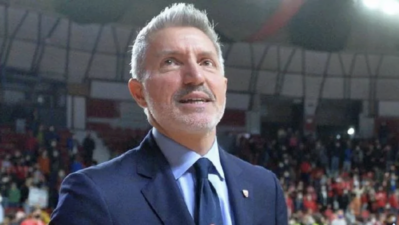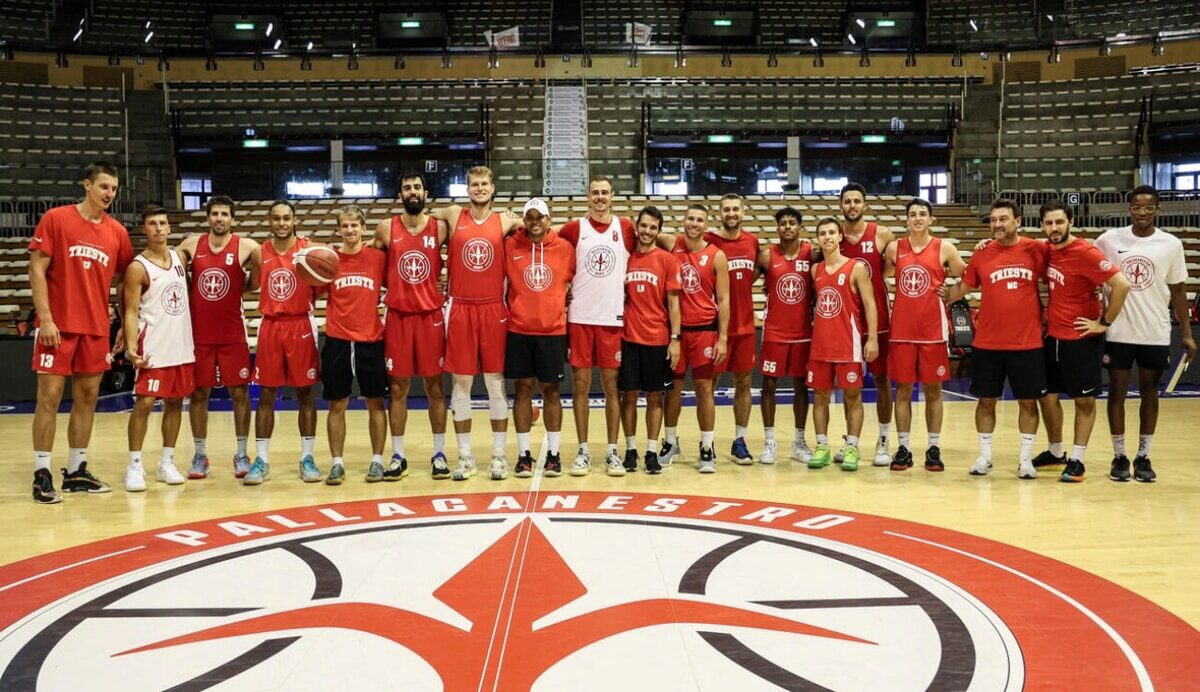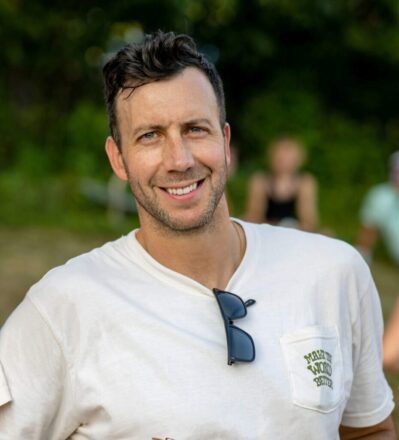Wharton Sports Analytics and Business Initiative
News
Italian Basketball Team Pallacanestro Trieste Partners with Wharton for an
Analytics-Focused Future
When someone thinks of Pallacanestro Trieste, the 48-year-old professional Italian basketball team, the Wharton School probably isn’t the first thing that comes to mind. However, thanks to new ownership and some analytics-focused students, the team’s future and the business school look to be inextricably linked.
The relationship started in January of this year, when a group of students in Wharton’s Executive MBA program put their heads, and wallets, together to acquire a 90% ownership stake in Pallacanestro Trieste for $5 million. The ownership group – led by recent Executive MBA graduate and former Philadelphia Eagle, Connor Barwin – wanted to seize the opportunity to invest in European basketball before the market for teams became more saturated and expensive, like it is for soccer. With more international players in the NBA and an increasing interest in the sport worldwide, they’re expecting European basketball teams to be a hot commodity in no time. The group’s investment is an informed, forward-thinking business decision befitting of students at the Wharton School.
Barwin, who is also the director of player development with the Eagles, knows simply owning the team is not sufficient to grow its value; the team needs to succeed. “We want it to be a major success,” he said. “Our long-term goal is to elevate Trieste into the EuroLeague. We’ve got around three leagues to go, promotion-style, but we’re excited about the team. We’re excited about the city. We think there’s an opportunity with the team to be a part of Trieste’s rise to an international city.”
To help kickstart the team’s journey to the EuroLeague, Barwin reached out to the Wharton Sports Analytics and Business Initiative (WSABI), whose work in sports analytics has helped other professional sports teams, to see if his new team’s data could reveal any insights.
Pallacanestro Trieste’s new general manager, Michael Arcieri – whose impressive career spans not-for-profit companies, law, and numerous stints with NBA teams like the New York Knicks and Orlando Magic – wanted to answer a few data questions in particular.
“We’re excited about the team. We’re excited about the city. We think there’s an opportunity with the team to be a part of Trieste’s rise to an international city.”
Co-Owner, Connor Barwin, WG’23
Arcieri wanted to know how the WSABI might be able to quantify team performance, and to understand to what degree regular season performance is indicative of outcomes like promotion, relegation, and post-season rankings. Then, he wanted to see what data could tell him about roster optimization.
“I wanted to find out, from a structural standpoint, our best strategic approach to building this team. And then, ‘hey, by the way, here’s our ranking of Italian players in addition to the Americans you’re asking us to look at,’” said Arcieri.
Teams in Trieste’s league, Serie A2, are required to carry a minimum number of Italian players, with fewer roster spots reserved for international talent. Because the pool of international players is so much greater, they can often provide superior skillsets, so deciding where to allocate those resources on the court is of critical importance.
To assemble a team of students capable of answering these questions, WSABI canvassed their network for applicants with strong data science and analytics capabilities. After a few rounds of applications and interviews, they built a team of six students that included sophomore Royce Sun and senior Lilian Li.
“I’m definitely a fan of basketball,” said Sun, “and that’s mostly why I applied. I was looking to do a data analytics project over the summer, so I thought it would be really cool. I’ve never worked on [a sports project] like this before.”
According to Li, the students utilized a large amount publicly available data about the league across all five positions on a basketball court, considering up to 20 different data metrics for each player, like shooting percentage and assist-to-turnover ratio. Then, they had to determine which analytics model was best suited for the data with which they were working.
“Choose the model, build the model, derive insights from it,” said Li.
The students were in regular communication with the team at Trieste, including Arcieri, who was available to them as a resource throughout the summer. “We’d ask him: how much do you value players that shoot a lot of threes,” said Sun. “Would you rather have efficient three-point-shooting guards, or really pass-forward point guards? And then using that information he would give us, we would customize the model ourselves.”
“For some of these people, like the coach or the general manager, they have been in the industry for a really long time, and they’ve seen these players competing on the court,” said Li. “Even though they cannot quantify their judgment of these players, they always have a sense of their skills.”
According to Li, it was usually the case that her team’s data empirically backed up the subjective intuition the team sometimes used to evaluate players, providing a statistical assurance they were on the right track. “When you have data points, they can help people see and evaluate players more clearly. When you’re choosing between two players, you can use the data as a reference for the final decision,” she said.

“Their work made me comfortable, in a sense. Typically, if you put smart people together, you can find out ways to create great things.”
Michael Arcieri, General Manager, Pallacanestro Trieste
For some students, like Sun, it was a surreal opportunity to help to inform the future of a professional sports team, calling to mind scenes from the influential true-story film Moneyball.
“The Moneyball thing was what I was thinking about the whole time,” he said. “Signing up for this project, I was really hoping to have an experience where I could really be involved in helping to make decisions. Obviously, I’m not the one making the decisions, but I’m hopefully influencing them.”
“I thought it was super cool that I was able to have genuine one-on-one conversations with this guy who’s just so knowledgeable about basketball. He’s been in the industry for a long time. When else would I be able to talk to a GM and literally be an advisor for him? That was a really cool dynamic,” said Sun.
“I always try to put myself in the position of other the other people and say, okay, what are all of these students trying to get out of this? I wanted it to be as rich and fun of an experience for them as it could be,” said Arcieri.
Ultimately, the student team’s research assured Pallacanestro Trieste that their intuitions about roster construction and indicators of success in the regular season were correct. Marrying their existing gut-feeling with new insights from the student team should set Trieste well on their way to a successful, analytics–backed future.
“The students were able to kind of tailor-make a search for us…they produced a lot of interesting information in addition to answering what have teams done in the past,” said Arcieri. “So that was great for me to digest that and see that it also confirmed a little bit of where [the team] was going. Their work made me comfortable, in a sense. Typically, if you put smart people together, you can find out ways to create great things.”
As for Barwin and his ownership group, the Wharton School was able to provide more than just an education on big-swing sports team investments – it helped them learn a thing or two about the numbers behind their new game, too.
“It’s unbelievable that it happened this way,” said Barwin. “None of this happens without Wharton. It’s the glue for this whole thing.”




